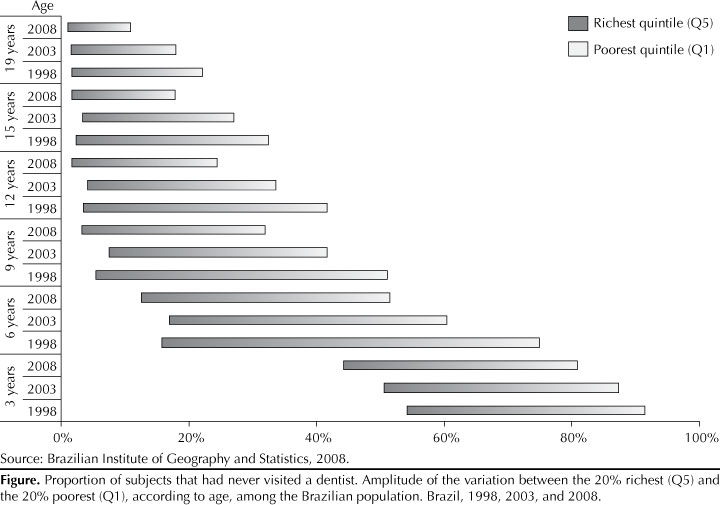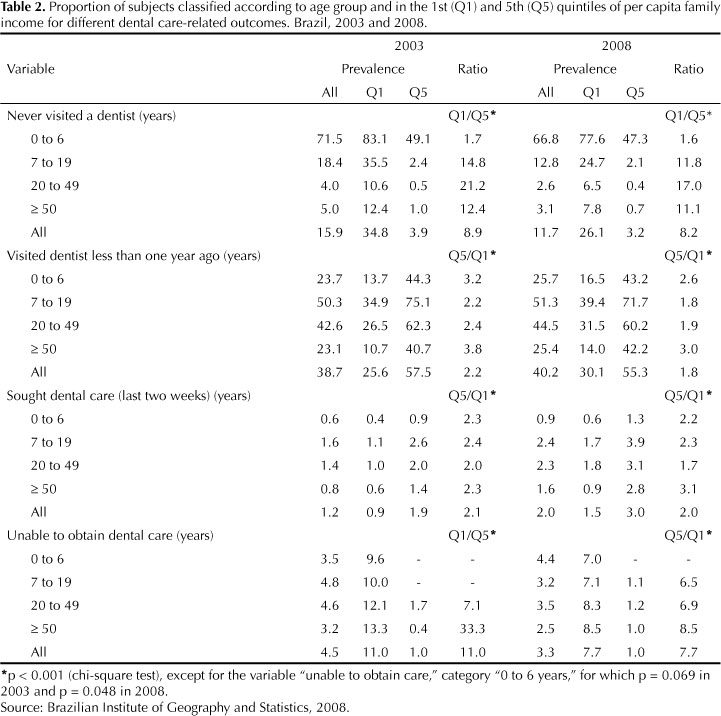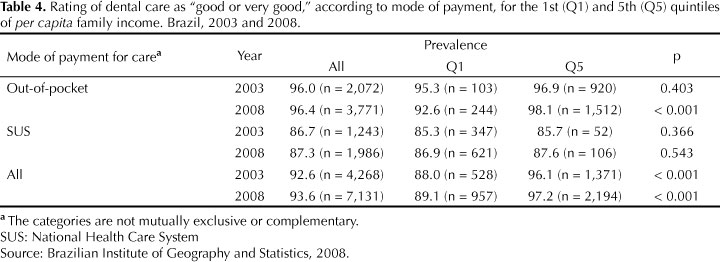OBJECTIVE: To analyze access to and utilization of dental care services in Brazil. METHODS: We used data from the 2003 and 2008 Brazilian National Household Surveys, which we compared to data from the 1998 survey. We investigated access and utilization variables at ages three, six, nine, 12, 15, and 19 years in the first (Q1) and fifth (Q5) quintiles of per capita family income. All analyses took into account the complex sampling strategy. RESULTS: The proportion of subjects that had never seen a dentist decreased during the period (18.7% in 1998, 15.9% in 2003 and 11.7% in 2008). There was an important reduction in the absolute difference in failure to use dental care services after age nine years between Q1 and Q5 from 1998 to 2008, which decreased to about half its value at 15 (30.3 percentage points - pp to 16.1 pp) and 19 years (20.4 pp to 9.9 pp). Q5/Q1 ratios for recent dental appointments fell across all age groups, especially between zero and six years (Q5/Q1 from 3.2 to 2.6); utilization of the National Health Care System for dental care increased in Q1 and Q5, with a reduction in the Q1/Q5 ratio of approximately 20%. Use of the National Health Care System for dental care increased by approximately 8% in Q1 and 35% in Q5 between 2003 and 2008. CONCLUSIONS: There have been considerable advances in terms of reducing inequalities in access to, and increasing the utilization of, dental care services in Brazil between 1998 and 2008. However, inequality between social groups remains substantial.
Dental Health Services; Health Services Accessibility; Health Inequalities; Social Inequity; PNAD





